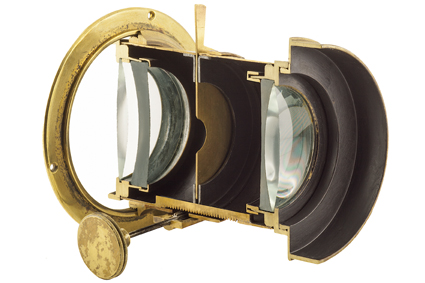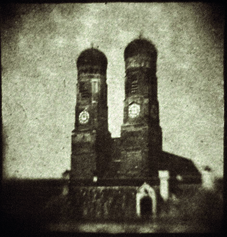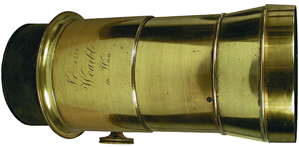Note to the Readers
This book is a sequel to a previous volume devoted to the history of French lenses of the 19th century. In a similar way it traces the initial development of photographic lenses in Austria and Germany up to December 31st, 1899. A reader could legitimately question why the book should stop at the threshold of another period of extraordinary inventions. Every limit contains an element of arbitrariness, and certainly this date, December 31st, 1899, has more a symbolic rather than a rational motive. However, it is hard to deny that the development of photographic lenses was a constant progression from photography's invention to Zeiss's anastigmatic lenses. From that moment on photographic optics took off in decidedly new directions. To be precise, the decisive moment in this development took place in the period right after the presentation of Schott and Co.'s optic glass catalogue in July 1886. There were surely other important turning points, such as the appearance of the Planar or even earlier with the Aplanat. Still, on the whole, the century closes with the end of a cycle that we can describe with lenses designed and hand-crafted by technicians, and the beginning of a cycle that introduces industrial production.

The new designs required very complex calculations. The smallest manufacturing imperfections in the new anastigmatic lenses nullified the project's plans. The building of these new lenses required investments in machinery that only the most solid financial groups could afford. Along with the explosion of practitioners of photography, the supply of new lens models multiplied. To define and describe this phase of history would have been more than this writer could have managed, which is why he begs his readers to tolerate this sudden cut off with the century's end...
From the Firs Chapter:
An Historic OverviewWhen one examines carefully the extraordinary history of photographic optics in Germany during the 19th century, one discovers two factors that contributed most to their success and to making this country world leader of the photographic industry in the following century: In the first place the very fruitful rapport between science and technology that Germany's cultural milieu encouraged. And secondly, the protective and supportive actions that the Bavarian and Prussian authorities undertook with respect to technological advancement in general and to the glass industry in particular. One example is the protection accorded by Maximilian I (before becoming King of Bavaria) to the young scientist Joseph Fraunhofer (1787-1826). With his support Fraunhofer was able to do lengthy research that would lead to the discovery of a method to produce better optic glass than was available at the time, as well as the invention of a machine to grind glass with great precision. It is he who first studied the characteristics of optic dispersion, the absorption lines of the sun's optic spectrum (to be known later as "Fraunhofer lines") and who in 1814 invented the spectroscope. He was also the first to measure the wave lengths of the various colors that compose light. His studies in the fields of mathematics and astronomy, carried out in a former Benedictine monastery, brought great know-how and prestige to Bavaria's optic industry...

... Frederick Scott Archer's (1813-1857) invention of the wet collodion process, published in 1851, opened up new possibilities for photography, not just in portraiture, but also in architectural photography and typographic reproductions, etc. Still, the large formats that became feasible with wet collodion, needed new large lenses that could cover such formats. At the time, in order to obtain a large print, the negative had to be of identical size, because the image was contact printed by placing the glass negative directly on the light-sensitive paper. Only later did smaller cameras used by amateurs create a demand for large prints projected from small negatives by means of enlargers. In response to this demand of large negatives, in the years between 1850 and 1870, manufacturers were prompted to build larger versions of Petzval's portrait lens, even if this caused them great technical difficulties. So, "giant lenses" began to be made, and a competition ensued among brands wanting to prove their skill and quality. As Eder describes, different companies were competing with each other in a race to see who could build the lens with the largest diameter.
The production of lenses with large diameters was for the German brands (Voigtländer, Dietzler, Busch, Wcaibl) a sign of pride and technological ability. The same thing occurred with French manufacturers and for about twenty years it seemed that progress in photographic lens design would be moving in that direction. In photo fairs and competitions these were the objects of attention and winners of prizes. These lenses, also become the source of fierce competition between French and German companies, but if they brought prestige to the firms that produced them, they were rarely used by photographers because of their high cost.
Peter W.F. Voigtländer started selling a lens with a 5 Zoll diameter (five-inch) for 450 tallers in 1856. At the same time, Dietzler built one of 6 Zoll for the price of 1200 florins. Voigtländer designed two 6 Zoll models with a long and short focus (34) in 1860. They weighed 14.3 kg. and cost 420 florins.
Emil Busch was in competition with Voigtländer; in 1857 he had built a 7 Zoll lens in Rathenow, but in 1864 Voigtländer was able to build an 8 Zoll model. This model, whose first example was symbolically numbered 16,000 in the series, was nicknamed "the lens of a thousand florins" in Vienna because of its high cost. Its lens, was the largest one built by the Austro-German company. After the 7 Zoll lens for the format 50x60 cm built in 1857, Busch created a very large lens of 10 zoll. The focal length was circa 86 cm and the format 76x76 cm Wcaibl (Waibl), whom Von Rohr (41) mentions, is noted among German photographers for both the quality and quantity of his production; after collaborating with Voigtländer, he built scientific instruments for Petzval .
Wcaibl belonged to the ranks of Viennese opticians who built numerous examples of lenses based on the Petzval design (43). He built lenses of 13.15 cm in 1853 and of 15.78 cm in 1854.
Raymond Lecuiyer reports that Steinheil had built an "objectif simple" which was designed for life sized portraits and had a focal distance of 2.75 m. (sic!) and was used with a camera with a draught of 5.50 m. The author does not give the specifications about the diameter of the lens; however, based on its use, one can deduce that it was in proportion. A Dallmeyer Rapid Rectilinear with a 152 cm focal length and f/10 stands out on the English market; it is kept in the Science Museum of London.
Various French photographers tried to build large examples or large lenses: Jamin, Darlot, Hermagis, Derogy, Lebrun and Maës, Plagniol. Of note is Jamin's centralizing cone of 18.3 cm, weighing 11.5 kg, built between 1857 and 1860. There is a cône décentralisateur Jamin et Darlot on exhibit at the Museum of Chalon sur Saone with a 100 cm focal length, 20 cm diameter, and weighing 14 kg. In the Auer Foundation's collection is perhaps the largest portrait lens ever built by Alpohonse Darlot, the 100 cm focal length Ancien Maison Jamin (1864/1866 ca.), with a front lens diameter of 26.3 cm 90 cm long…
Continue...

Footnotes:
(34) Horn. Phot. Jour., 1860, XIV, 36.
(41) Von Rohr p. 257.
(43) Kuchinka. Geschichte der photographischen Optik in Wien. Phot. Korr., 1927.